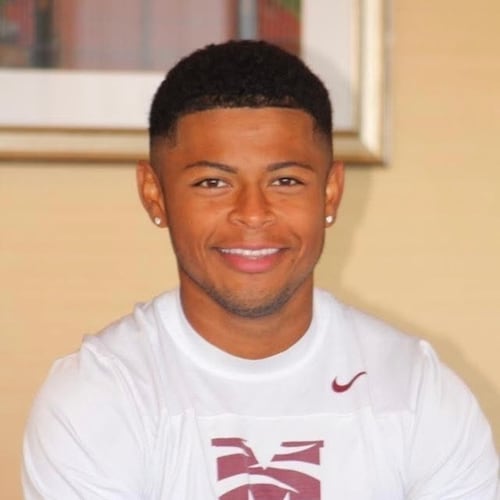Some public schools that require students to wear uniforms offer “dress-down” days, letting them wear other clothes. But this can come at a price, with principals requiring students pay $1 or $2 for the privilege.
A group of Cobb County parents is upset at the practice, arguing it ostracizes children not able to pay and conflicts with the often-cited argument that uniforms level the socioeconomic playing field, with everyone dressed the same and no one wearing costly name-brand attire.
In Cobb, nearly 70 percent of the 29 schools that require uniforms charge students a fee to participate in designated “dress-down” days, which vary among the schools. School officials say the money is used to support school clubs and charitable causes and purchase school supplies. But those fees are another point of contention about uniforms, leading some school board members to say it’s time to reconsider the uniform policy.
“I account for every penny. I don’t have a lot of extra for dress-down days,” said Dionne Lewis, a single mother whose daughter attends Riverside Intermediate School in Cobb, where students have been charged for dress-down days. “If you’re being respectable in class and … not being disruptive, it shouldn’t matter what you have on your back.
“Don’t tell me that in order for them to wear their own clothes, we have to pay for it,” she added.
Questions about school uniforms were recently highlighted by The Atlanta-Journal Constitution's finding that Hispanic and black students in Georgia and throughout the U.S. are required to wear them more often than white students and more likely to face disciplinary action, which can include missing classroom lessons, for dress violations.
Across metro Atlanta, about half of black students and one of every four Hispanic students wear uniforms, while about one of every 20 white students do. The racial disparity is among the starkest in Cobb, where about half of students are black or Hispanic, and every school that requires uniforms is majority black and Hispanic. The district also has one of the harsher discipline records, with about one in five dress code violations, which can include uniform infractions, punished with in-school suspensions.
DeKalb, Clayton, Atlanta Public Schools, Fulton and Gwinnett also have schools that require or encourage uniforms, though it’s not clear how many allow charging children to “dress down.”
In Cobb — the second-largest school district in Georgia and 24th-largest in the U.S. with close to 110,000 students — parents have been the most vocal in criticizing school uniforms. Some argue that many uniform schools have a large percentage of low-income students and charging them to wear everyday, non-uniform, clothes is a financial burden and unfair.
Some school leaders and parents believe requiring all students to dress alike reduces bullying, makes schools more secure and tempers class differences, but others say it penalizes minority students and may violate civil rights.
Cobb school leaders say they want to re-evaluate the uniform policy and the practice of charging students for dress-down days. At least one Cobb school board member, David Banks, said at a recent meeting he believes students should have the choice whether to wear uniforms.
There's been "a lot of discussion as of late regarding school uniforms and for us to take a very reflective look at what are the local practices in the (school) building," said Grant Rivera, chief leadership and learning officer for Cobb schools. "What's the consistency with which they're enforced? Where we may send a mixed message? There's a reflective opportunity for us to say this may have been a practice. How do we make sure it sends the correct message?"
Schools often sell wrapping paper, candy or other items for fundraisers to support school clubs and activities. But charging public school students to come out of uniform is not typical, according to academic scholars.
“It’s problematic to have an option where students can violate the rules just by paying a nominal fee, and there are equity implications there among the students,” said Ashlyn Aiko Nelson, associate professor at Indiana University, who’s researched school fundraising.
“Other types of voluntary contributions often made in more wealthy schools are not being made in low-income schools. And so this may be one of the only sources of private voluntary contribution that they have access to within the school. But it is a very strange way of raising revenues via the student body itself rather than reaching out to community foundations or other supporters.”
Some of the first uniform requirements were adopted in public schools in the late 1980s. Since then, research into whether uniforms improve academic performance and decrease violence has been largely inconclusive.
For some parents, school uniforms are viewed as a fee for public education – and charging students money to “dress down” adds insult to injury.
Linda Swain, a former administrator in Fulton County and Marietta school systems, said her daughter attended Powder Springs Elementary in Cobb when the school began requiring uniforms nearly two years ago. She believes school leaders didn’t do enough to inform parents about the proposed changes or get their input.
“My daughter doesn’t like uniforms and didn’t want to wear one to school,” said Swain, whose daughter now attends school online at home. “I do not like uniform policies for public schools … If it can’t be proven that it (school uniforms) increases achievement then maybe this is a lesser priority.
“To have a fee I think is problematic because of the equity and fairness issue. You can’t just have policies and procedures in place that in implementation are so dramatically different from one zip code to another, especially when those zip codes have dramatically different demographics.”
About the Author
Keep Reading
The Latest
Featured


